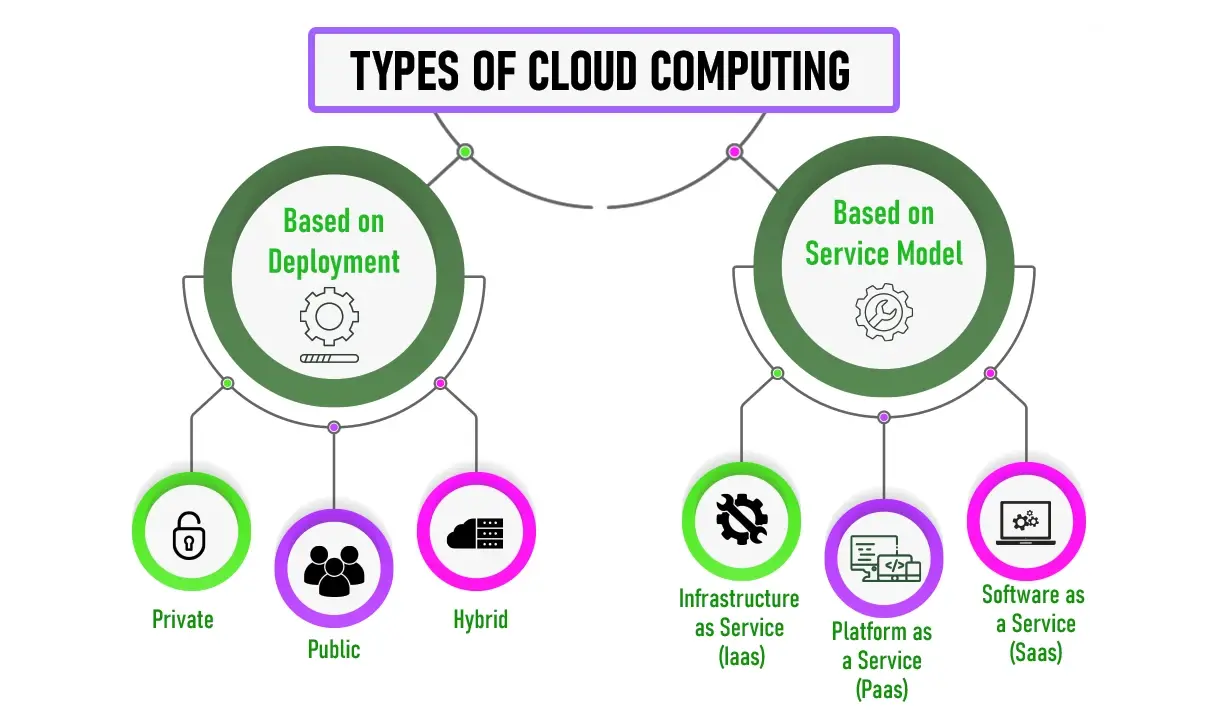Introduction: The Cloud That Just Clicks
Think of cloud computingas a skyline of choices. Some buildings are fully furnished; others are just bricks and beams. Either way, imagination becomes infrastructure. Here, you'll get a look at what makes each cloud model distinct—and which one fits your story.
We’ll cover:
- What drives IaaS, PaaS, and SaaS
- Deployment models that shape your control and flexibility
- Real-world examples that ground the technology
- A comparison to help you pick your path
- A smooth conclusion and call-to-action to light your next idea
Let's ascend.
1. The Core Service Models: IaaS, PaaS, SaaS
Cloud service models define how much control the provider holds—and how much you keep for yourself.
IaaS – Infrastructure as a Service
IaaS hands you raw infrastructure: virtual machines, storage, network, all served up via APIs. You manage the operating system, middleware, and apps—but skip hardware upkeep.
(bmc.com)
PaaS – Platform as a Service
PaaS layers up abstraction. You get an environment—think development tools, databases, runtime—while the provider handles the underlying infrastructure. Perfect for developers who want friction-free deployment.
SaaS – Software as a Service
Here’s the polished version: complete software delivered via the cloud. No installs, no patching—just browser access. Everything is managed, from infrastructure to updates.
(Wikipedia)
| Model | Managed by You | Managed by Provider |
|---|---|---|
| IaaS | OS, apps, data | Infrastructure (hardware, VMs) |
| PaaS | App logic and data | Runtime, platform, infra |
| SaaS | Limited (user settings) | Application and all layers underneath |
2. Deployment Views: Public, Private, Hybrid, Multi-Cloud
It’s not just what you use—it’s where you run it.
- Public Cloud: Shared infrastructure accessible via the internet. Economical and scalable.
- Private Cloud: Dedicated infrastructure—your own or hosted—ideal for security or compliance.
- Hybrid Cloud: Best of both worlds; public and private linked for data and app mobility.
- Multi-Cloud: Mix-and-match providers—for resilience or to play to each platform’s strength.
(Investopedia)
3. Why These Models Matter
Here’s the shift each brings:
- IaaS: Offers flexibility and control—at the cost of setup and management.
- PaaS: Speeds development—but reduces fine-grained control.
- SaaS: Most convenient—but rigid in customization.
On deployment:
- Public: Fast and cost-effective.
- Private: Secure and compliant—but pricier.
- Hybrid/Multi-Cloud: Agile architecture—but comes with integration puzzles.
4. Real-Life Snippets That Stick
- Streaming services: Netflix runs on IaaS—renting compute power to deliver video at scale.
- Startup devs: A lean team might use PaaS to launch apps fast, without infrastructure headaches.
- Everyday SaaS: Think Gmail or Office 365—cloud-powered, always current, and zero installs.
(Lifewire)
5. Quick Reference: When to Use What
| Scenario | Best Model |
|---|---|
| Building your own virtual server stack | IaaS |
| Developing apps without server hassle | PaaS |
| Using email, CRM, or productivity tools | SaaS |
| Mixing on-prem and cloud safely | Hybrid Cloud |
| Avoiding cloud-vendor lock-in | Multi-Cloud |
FAQs You’ll Want Answered
Q: Which cloud model gives me the most control?
A: IaaS. You build the stack from OS upward.
Q: Want to launch fast without infrastructure work?
A: PaaS—that's your streamline layer.
Q: Need tools without managing servers?
A: SaaS is the most turnkey cloud offering.
Q: What if I need both performance and compliance?
A: Hybrid gives flexibility for both needs.
Q: Is working across multiple clouds worth the effort?
A: Yes—especially if uptime and vendor flexibility matter to you.
Conclusion: Your Cloud—Your Choice
Cloud models are tools, not cages. Whether you're building from the ground up, focused on speed, or simply want convenience—there’s a fit. The real power? Picking the one that frees your vision—without holding your hand too tightly or throwing you off the ground.
Ready for next steps? Try defining your project, map your needs to the table above, pick a model—or mix them sustainably—and watch your idea lift off.
Leave a comment
Your email address will not be published. Required fields are marked *



